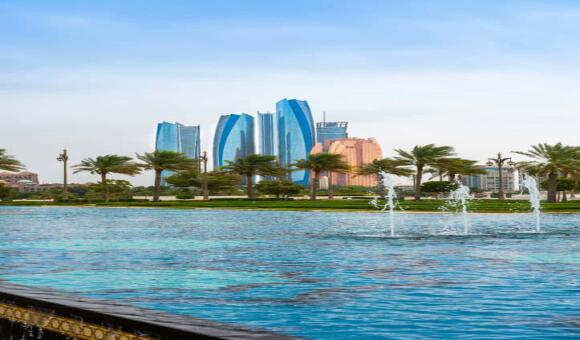The Complete Guide to Concrete Floor Coatings and Waterproofing Material
When it comes to constructing durable and resilient buildings or infrastructure, the quality of materials used plays a pivotal role. Among these, Concrete Floor Coatings and waterproofing material are two of the most critical elements, especially in environments prone to wear, moisture, or chemical exposure. Whether you’re working on a residential, commercial, or industrial project, these materials offer unmatched protection, aesthetic enhancement, and long-term performance. This blog explores everything you need to know about these vital components—how they work, where they are used, and why they matter.
Understanding Concrete Floor Coatings
Concrete is strong, but it's not invincible. Over time, it can crack, erode, or become stained due to exposure to traffic, chemicals, and moisture. This is where concrete floor coatings step in. These are specially formulated materials applied over concrete floors to protect them and extend their lifespan.
1. Types of Concrete Floor Coatings
There are several types of coatings designed for various applications:
Epoxy Coatings: Known for their high durability and glossy finish, epoxy coatings are ideal for garages, warehouses, and industrial spaces. They offer chemical resistance, excellent adhesion, and are easy to clean.
Polyurethane Coatings: These are more flexible and UV resistant than epoxy, making them ideal for outdoor applications. They are also less likely to yellow over time.
Acrylic Sealers: Often used for decorative concrete, acrylic sealers enhance the natural look of the concrete while offering moderate protection against wear and tear.
Each type has its unique benefits depending on the functional and aesthetic goals of the project.
2. Benefits of Concrete Floor Coatings
Durability: These coatings significantly increase the resistance of concrete floors to abrasion, impact, and chemicals.
Aesthetic Appeal: Available in a range of colors, textures, and finishes, they enhance the visual appeal of plain concrete.
Safety Features: Some coatings can be made slip-resistant, offering safer flooring solutions for industrial and commercial settings.
In addition to these, many modern coatings are environmentally friendly, emitting low or no VOCs, making them a safer choice for indoor spaces.
3. Application and Maintenance
Proper surface preparation is crucial for the effective application of any floor coating. This often involves cleaning, repairing cracks, and sometimes grinding or acid etching the surface to ensure proper adhesion. Once applied, these coatings require minimal maintenance—usually just routine cleaning to preserve their appearance and performance.
The Role of Waterproofing Material in Construction
Water is one of the most damaging elements a structure can face. Without proper waterproofing, moisture can infiltrate building materials, leading to mold growth, structural degradation, and increased maintenance costs. Waterproofing materials are engineered to prevent water ingress in buildings, whether above ground or below.
1. Types of Waterproofing Materials
The market offers a variety of waterproofing options, each suited to specific applications:
Liquid Waterproofing Membranes: These are applied using a brush, roller, or spray. Once cured, they form a seamless, rubber-like membrane that adheres tightly to surfaces.
Bituminous Membranes: Typically used for roofing and basement foundations, these consist of bitumen-based sheets that are torch-applied to create a waterproof layer.
Cementitious Waterproofing: One of the simplest forms, this is a mix of cement-based compounds that are easy to apply and bond well with masonry.
Thermoplastic Membranes (TPO, PVC): These are synthetic membranes often used in commercial roofing. They are heat-welded to form an impenetrable barrier against water.
Each type comes with its set of advantages depending on the site conditions, budget, and longevity requirements.
2. Applications of Waterproofing Material
Waterproofing is used in various areas of a building:
Foundations and Basements: Protecting these areas is critical since groundwater pressure can lead to leaks and structural compromise.
Roofs and Terraces: Constant exposure to weather makes these areas susceptible to leaks without proper waterproofing.
Bathrooms and Wet Areas: Waterproofing is crucial behind tiles and around plumbing fixtures to prevent water seepage into adjacent rooms.
Water Tanks and Swimming Pools: These applications require high-performance, non-toxic waterproofing materials that withstand constant water pressure.
3. Long-Term Benefits
Investing in high-quality waterproofing material ensures:
Increased Structural Longevity: By preventing water ingress, the underlying building materials last longer, reducing the need for costly repairs.
Energy Efficiency: Moisture infiltration can damage insulation, increasing heating and cooling costs. Waterproofing helps maintain energy efficiency.
Healthier Environments: Waterproofing mitigates mold and mildew growth, contributing to better indoor air quality.
Proper installation is key. A poorly executed waterproofing job can fail prematurely, leading to expensive fixes and potential health hazards.
Integrating Concrete Floor Coatings and Waterproofing Systems
Many modern building designs integrate concrete floor coatings and waterproofing materials as part of a comprehensive protective strategy. For example, in a warehouse with high foot and forklift traffic, an epoxy floor coating might be used in tandem with waterproofing membranes to ensure that the floor remains durable and resistant to both mechanical and moisture-related damage.
1. Combined Systems in Industrial Spaces
In industrial facilities, floors are exposed to chemical spills, heavy machinery, and cleaning processes involving water. Here, combining chemical-resistant floor coatings with waterproof underlayments ensures the substrate remains protected.
2. Residential Uses
In homes, especially those with basements or rooftop terraces, both coatings and waterproofing materials can be used to create beautiful, functional, and safe environments. Stamped concrete patios can be sealed with decorative acrylic coatings, while waterproofing membranes underneath prevent moisture from seeping into living spaces below.
3. Green Building Standards
With sustainability becoming a central focus, there is a growing trend toward using eco-friendly concrete coatings and waterproofing products. These materials not only protect the building but also contribute to green certifications by minimizing environmental impact.
Factors to Consider When Choosing the Right Material
With a variety of products available in the market, choosing the right concrete floor coating or waterproofing material can be overwhelming. Here are some key factors to consider:
Project Environment: Indoor or outdoor? Residential, commercial, or industrial? These questions will help you narrow down suitable materials.
Chemical Exposure: If the area is prone to exposure to oils, acids, or cleaning agents, choose chemical-resistant coatings.
Moisture Levels: Areas with high groundwater tables or regular exposure to rain need robust waterproofing systems with excellent hydrostatic resistance.
Aesthetic Preferences: Some coatings offer customizable colors, finishes, and patterns, ideal for spaces where design is a priority.
Budget and Lifecycle Costs: While some systems may have a higher upfront cost, they often offer superior longevity and lower maintenance, making them more cost-effective over time.
Conclusion
The importance of concrete floor coatings and Waterproofing Material in modern construction cannot be overstated. They form the backbone of a structure’s durability, safety, and visual appeal. Whether you're constructing a new building, renovating a commercial facility, or upgrading a home, investing in the right materials ensures long-term value and performance.
Both systems serve as proactive measures—shielding your structure from damage before it occurs. With proper planning, expert application, and routine maintenance, these materials can provide decades of reliable protection. In an industry where resilience and performance are non-negotiable, the right choice of coatings and waterproofing will always pay off.








 UnlockWare Group
UnlockWare Group
Comments (0)